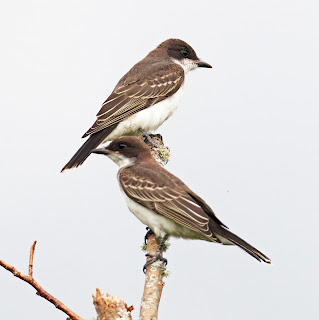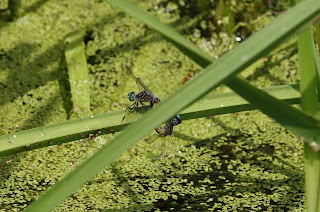NATURE MONCTON NATURE NEWS
July 27, 2024
Nature Moncton members, as well as any naturalist
in New Brunswick or beyond, are invited to share their photos and descriptions
of recent nature sightings to build a fresh (almost) daily edition of Nature
News
To respond by e-mail, please address your message
to the information line editor, nelsonpoirier435@gmail.com
.
Please advise both the editor at nelsonpoirier435@gmail.com
and the proofreader nicholsl@eastlink.ca
if any errors are noted in wording or photo labelling.
For more information on Nature Moncton, check the website at www.naturemoncton.com
.
Proofreading
courtesy of Louise Nichols at nicholsl@eastlink.ca
Heads-up on
the Monarch blitz on today in the Moncton area.
Moncton and Dieppe: Monarchs & Cycles
Date: July
27th 2024 (Rain date: August 3rd)
Locations and times:
– 1 Foundry St. Milkweed Patch, Moncton (10:30)
– Place 1604, Dieppe (12:00)
– Surette St. Milkweed Patch, Dieppe (1:30)
(5 km one-way bicycle trip between stops)
Join us for
a fun day of wildlife observation with other cyclers, as we celebrate Monarchs
& Cycles during the International Monarch Monitoring Blitz! Nature NB, in
collaboration with Mission Monarch, is excited to bring this event to you.
Cycling is
optional as you can come to any event with a vehicle or by foot, but if you
would like to experience all three stops, La Bikery has a number of rental bikes available at
their Assomption St location.
Event
Highlights:
1 – 10:30 –
Moncton stop : Common Milkweed and Monarch Monitoring at the 1 Foundry St.
patch: Help us count milkweed stems and monitor Monarch butterflies at all
life stages.
2 – 12:00 –
Picnic – Place 1604 stop, Dieppe (Bilingual) : Have a picnic with us, with
the market nearby! With Petitcodiac Watershed Alliance and Nature NB,
learn about native plant seeds and the ease of growing milkweed and other
nectar plants in your garden. Discover the PWA’s rain garden projects.
3 – 1:30 –
Final Stop (In French): Come check out with us the new garden near Surette
Street installed by Les Ami(e)s de la Nature Sud-Est and monitor Monarch
butterflies and milkweed.
We invite
everyone to participate, whether you can attend all events or just one. Come be
a part of this amazing initiative across our continent and help support Monarch
conservation!
See you
there!
**Aldo
Dorio photographed what would appear to be part of a young-of-the-year family
of Red Foxes at Hay Island on
Friday.
**John
Inman photographed one of his groundhogs looking for a drink but there was not
much there as the Raccoons are in it all night. John finds a groundwater dish
lets everyone get a drink when it is hot and dry.
John also
photographed a different-looking fly standing upright approximating deerfly in
size which turned out to be an interesting one. BugGuide has identified it as
the Quadrate Snipe fly (Chrysopilus quadratus). It gets the snipe fly
name due to its distinct mouth parts, which unfortunately do not show in the photo, that resemble the beak of the avian Snipe. The distinct shadow marks on
the wing do show nicely. This fly feeds on plant juices and other small insects
but not humans.
**On Friday
Brian and Annette Stone visited Louise and Glen Nichols at their Aulac home.
While there, the excellent nature around their
home tempted Brian to do a little photography and he shares photos he took of
some of the collection of five plus Garter snakes that are renting their garden hoop house, a female Belted Kingfisher surveying the pond area from the
roadside power lines, and one of the several Red Crossbills that are
frequenting their yard picking grit from their driveway.
On their
way to Aulac, Brian and Annette played tag with a huge storm cloud that
hung over half the sky and soon after arriving, it dropped heavy rain for half
an hour or so.
Earlier, on Brian's mailbox, a member of the Metallic
Wood-boring Beetle family posed for a photo.
**It’s that
time of year when we start to see seed clusters (samara) on ash and maple
trees.
Nelson
Poirier shares a photo of Red Ash samara recently noticed. There are
several features that identify our three native ashes but a close look at the
samara is one. With Red Ash, the wing of the samara goes halfway down the seed
case, the wing encloses all the seed case with Black Ash, and the wing encloses only the tip of the seed case in White Ash.
As Red Ash
and White Ash are dioecious, the pollen flowers and seed flowers appear on
separate trees. Therefore, the seed clusters would appear only on female trees.
Black ash will vary, being monoecious or dioecious.
Nature
Moncton
.JPG)
.JPG)
.JPG)
.%20JULY%2026,%202024.%20BRIAN%20STONE.JPG)




.JPG)
.JPG)


.jpg)

.JPG)


.JPG)
.JPG)

.JPG)
.JPG)
.JPG)
.JPG)
.JPG)
-SharpenAI-motion.jpg)
.JPG)

.JPG)
.%20JULY%2019,%202024.%20BRIAN%20STONE%20(4).jpg)
.JPG)
.jpg)

.JPG)

.JPG)
.JPG)




.JPG)





.JPG)




.jpg)











.JPG)

.JPG)
.JPG)
.JPG)
.JPG)
.JPG)

.JPG)
.JPG)
.JPG)
.JPG)
